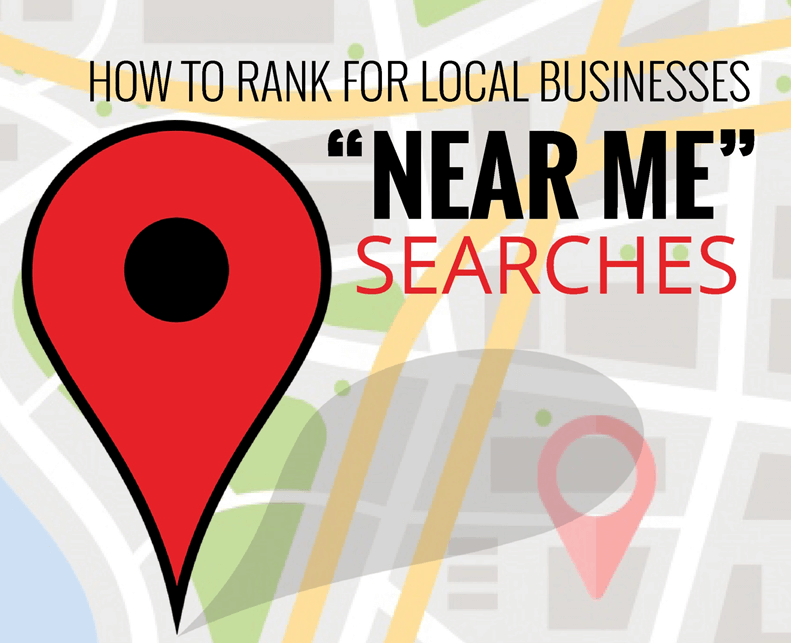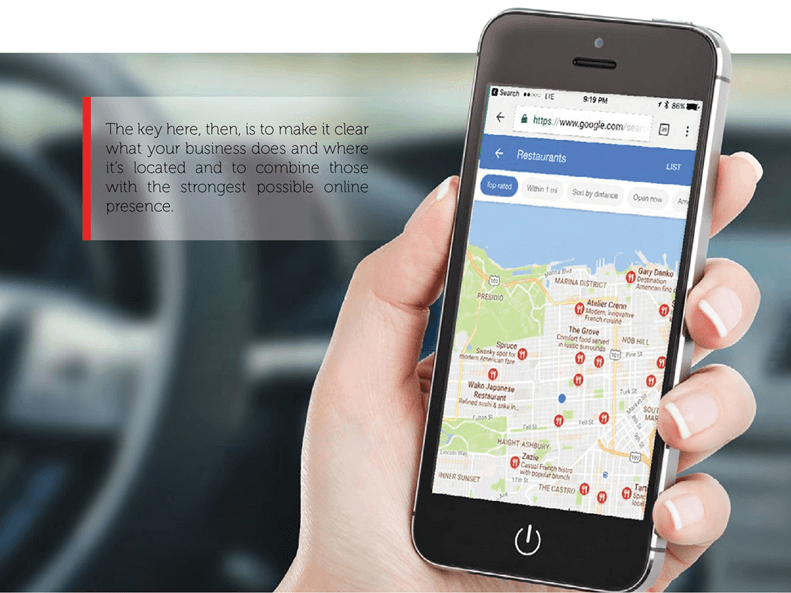
Search has changed in the last four years. Anybody who’s paying attention knows that.
Since 2014, mobile searches have overtaken desktop searches. At the same time, Google has prioritized local searches to the point where finding non-local results has become almost impossible. In fact:
These two factors, combined with a concurrent rise in voice search, have changed the ballgame when it comes to ranking for local searches on Google.
They explain why searches for “businesses near me” have skyrocketed. After all, if someone’s out looking for a place to eat or a store to visit, they’re probably not looking for something 100 miles away. They want to know what they can find nearby.
Fortunately, there are some simple things you can do to improve your “near me” search results.

It’s important to understand which factors make the biggest difference in “near me” searches. The solution is not stuffing your site with “near me” keywords. Instead, keep these three things in mind.
1. The relevance of your business to the search being conducted. Google wants to return only relevant results. That means if someone searches for a shoe store, your clothing store may not rank even if you sell shoes, too. Likewise, a sushi restaurant won’t rank as highly if someone searches “Asian restaurants near me” as it would if they searched “sushi restaurants near me.”
2. How close your business is to the searcher’s location. People who are conducting “near me” searches want businesses that are close by. Even if your business is relevant, a distance of 100 miles will mean you rank lower than a business that’s just five miles from the searcher’s location.
3. How prominent your business is online. A business with a top-ranking website, multiple listings in directories, and a strong social media presence is likely going to earn a higher rank than one with a weak online presence.


To improve your rank, you need to let Google and other search engines know where you are. One way to do that is to plant virtual flags by getting your business included in online directories and review sites.
You should start by searching the most relevant “near me” terms to see where you rank in the results. You’ll also want to note the sites that appear near the top. They will likely include:

You may also see local directories that are specific to your area or niche. Make a note of these. Then, go and claim your listings on each site. If you’re not listed, create a profile.
It’s also important to make sure your NAP listings are consistent. It should be clear that the company listed on Yelp is the same as the one on Foursquare and the one linked to your Facebook page.

What sets your business apart from the others that rank in “near me” searches? One way to find out is to vary your search terms and focus on the things you offer that others don’t.
For example, let’s say you own a sushi restaurant. You should search “sushi restaurants near me,” but you might also vary it and search these terms, too:
Sushi restaurants near me open 24 hours
Sushi restaurants near me that deliver
Top sushi restaurants near me
Affordable sushi restaurants near me
You get the idea, I hope. If you’re the only sushi restaurant in the area that delivers, highlighting your delivery service can help you attract new customers.

Your NAP listings tell potential customers where to find you, but they may use other terms to define what’s near them. For example, many large cities have defined neighborhoods. In San Diego, these include:
Normal Heights
The Golden Triangle
Mira Mesa
The same is true in other big cities. Identifying yourself by the neighborhood you’re in can help you rank in “near me” searches.
The same is true of landmarks. Someone in Seattle might search for “Italian restaurants near the Space Needle.” You may also want to name prominent businesses near you (provided they aren’t your competitors). Adding exterior photos can also help identify your location.


According to Review Tracker, 14% of all searches are carried out by people who want to visit a business immediately. It makes sense to target these people, many of whom will be searching using mobile devices.
One way to do that is to include your telephone number with all listings. Some sites may allow you to enable a “Call Now” feature so that mobile users can dial you with one touch. One example of this is Facebook, where mobile advertisers can choose “Call Now” as their CTA button.

The final step you need to take is encouraging your customers to review your business on Google. Any review signal can help, but for obvious reasons, Google reviews carry more weight than those on other sites.
Keep in mind that businesses that actively solicit reviews tend to get more reviews and have higher average ratings than businesses that don’t. One reason is that people who are satisfied often won’t bother to leave a review – whereas people who are unhappy are motivated to leave one.
You can start by generating a link that your customers can use to leave reviews. You can find detailed instructions on how to do it here.
Of course, you’ll also need to monitor your reviews and respond as needed. That way, people who read reviews will see that you care about your customers’ experience.
Remember that rankings change…
Even if you’ve done all the things suggested here, it’s still important to monitor your search rankings. If you’re still not getting the rank you deserve, you’ll need to double down on your efforts to make sure that people near you can find you.
